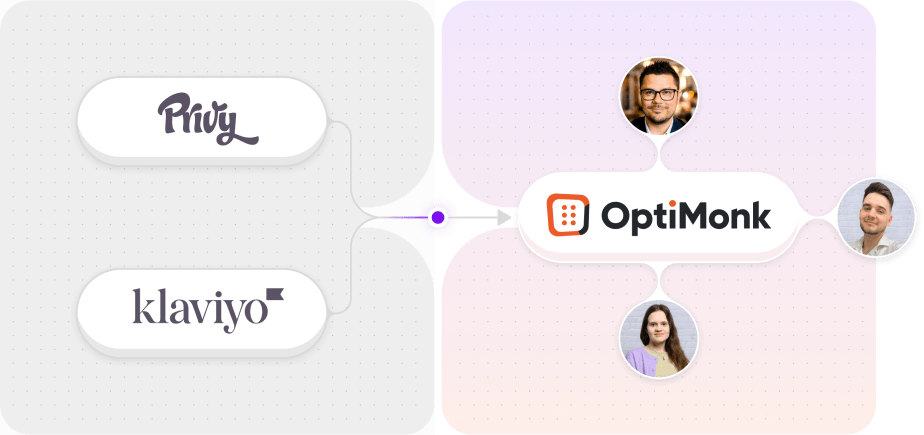- Blog
- 43 SMS Marketing Statistics for 2026: Open Rates, CTRs & ROI
43 SMS Marketing Statistics for 2026: Open Rates, CTRs & ROI
Table of Contents
On December 3, 1992, 22-year-old engineer Neil Papworth sent the first-ever SMS: “Merry Christmas.” Fast forward to today, and that tiny message has evolved into a $12.6 billion marketing machine.
Today, mobile users receive text messages in under 7 seconds—and that speed translates into serious marketing results.
So, why is SMS leading the pack in 2026? Let’s dive into the marketing statistics that prove just how powerful this channel has become.
SMS marketing is not dead
Despite the rise of AI chatbots, social platforms, and shiny new apps, SMS marketing campaigns are still king when it comes to direct, high-conversion communication.
Why? Because texts don’t wait in a queue or get filtered into spam folders. They show up front and center—on the device people check over 100 times a day.
Consumers are still loving text messages, especially when they’re timely, personalized, and relevant. Think flash sales, order updates, loyalty perks—it’s all about delivering real value, quickly.
If you’re lagging behind with your SMS marketing strategies, you’re missing one of the most high-impact, low-cost channels available.
TL;DR: Key stats at a glance
If you don’t want to read the whole article, here’s a quick breakdown of all the SMS marketing stats we’ve collected:
- SMS open rates are 98%.
- 90% of SMS messages are read within 3 minutes.
- SMS opt-out rates are consistently below 3%.
- SMS click-through rates average 19–20%.
- Email CTR averages between 0.77% and 4.36%.
- SMS response rates are 45%, compared to 10% for email.
- SMS campaign conversion rates range from 21% to 32%.
- Abandoned cart SMS conversion: 24.6%–39.4%.
- Post-purchase follow-up conversion: 14.6%–33.3%.
- 72% of consumers made a purchase after receiving a brand SMS.
- 86% of consumers made multiple purchases via SMS in the past year.
- SMS marketing returns $4 for every $1 spent.
- Customer acquisition via SMS can cost as little as $0.10 per subscriber.
- Automated SMS flows generate up to 30x more revenue per recipient than one-off messages.
- 62% opt in to SMS after a purchase.
- 59% opt in for a discount.
- 39% opt in for fast customer support.
- 38% want exclusive offers or early access.
- 33% value personalized messaging.
- 31% appreciate knowing that there’s a real human texting.
- 28% want two-way conversations via SMS.
- 27% want to manage their subscriptions via text.
- 23% prefer frictionless reordering.
- 20% are fine with re-entering payment info to reorder via SMS.
- 72% of users are okay with at least one text per week.
- 32% prefer receiving texts a few times per week.
- 27% like weekly texts.
- 13% are okay with daily texts.
- 61% unsubscribe if they receive too many texts.
- 45% prefer receiving texts in the evening.
- 25% prefer texts in the afternoon.
- 13% prefer midday texts.
- 9% prefer morning texts.
- 8% are okay with late-night texts.
- SMS texts convert at 21–30%, compared to 2.3% for cold calls.
- 74% of European consumers made a purchase after a brand SMS (vs. 72% globally).
- 23% of Europeans made 4–5 SMS purchases last year.
- 67% of European users bought earlier than planned due to SMS.
- 13% made impulse purchases from SMS.
- 31% more people text e-commerce businesses now vs. 2023.
- 45% of consumers only respond to trusted senders.
- Interactive SMS messages (e.g., polls, surveys) have a 70% conversion rate.
- Static SMS messages convert at 36%.
Now that you’ve seen the highlights, let’s dive into the full breakdown behind these numbers.
SMS open rates
We’re kicking it off with the showstopper: 98% open rates on mobile devices.
Even better? 90% of texts are read within 3 minutes. Compare that to email’s average of ~20%…it’s not even close.
This isn’t just visibility—it’s instant visibility. When you send a message via SMS, you’re virtually guaranteed it’s getting seen.
Low opt-out rates
SMS opt-out rates consistently sit below 3%, showing that consumers don’t just tolerate texts—they expect them.
Of course, relevance and timing are key. People won’t stick around if you’re sending spammy, irrelevant blasts. But when done right, SMS builds trust and drives action.
Click-through rates (CTR)
Here’s where it gets even juicier: average SMS click-through rates sit around 19–20%, while email marketing lingers between 0.77% and 4.36%.
Why such a big difference? It’s about proximity and urgency. Texts feel personal and prompt, and that makes people want to take action right away.
Response and conversion rates
Conversion rates
If you’re wondering whether those replies and clicks translate to online sales—yes, they absolutely do. Across industries, SMS campaigns see 21% to 32% conversion rates among mobile users.
Some real-world examples:
- Abandoned cart recovery via SMS: 24.6%–39.4% conversion rate.
- Post-purchase follow-ups: 14.6%–33.3% conversion rate.
Infobip found that 72% of consumers made a purchase after receiving a text from a brand.
Even more impressive? 86% have made multiple purchases from SMS in just the past year.
Return on investment (ROI)
Let’s talk money—because none of this matters if it doesn’t pay off.
SMS offers $4 for every 1 dollar spent and with acquisition costs often as low as $0.10 per subscriber, it’s a no-brainer.
What makes this even better? Automation and segmentation. Set up flows for things like abandoned carts, post-purchase sequences, or win-back campaigns and watch the returns stack up.
Automated flows generate up to 30x more revenue per recipient than one-off blasts.
What drives SMS subscriptions?
Understanding why people subscribe helps you get more of them. Here’s what drives SMS opt-ins according to Klaviyo:
- 62% sign up after a purchase
- 59% opt in for a discount
- 39% want fast customer support via conversational text messages
- 38% want exclusive offers or early access
- 33% appreciate personalized messaging
- 31% like knowing there’s a real human texting
- 28% want two-way brand conversations
- 27% want to manage their subscription by text
- 23% prefer frictionless reordering
- 20% don’t mind re-entering payment info if they can reorder via SMS
Bottom line? Offer value, convenience, and personalization in your SMS marketing campaigns—and people will sign up.
SMS frequency preferences
Worried about annoying your audience? Here’s what users actually prefer, according to Klaviyo:
- 72% are fine with at least one text per week
- 32% prefer to receive texts few times a week
- 27% like weekly text messages
- 13% are okay with daily updates
That said, there’s a limit. 61% unsubscribe if they receive too many text messages. So respect the inbox (or screen), and keep your messages useful.
Best times to send SMS campaigns
Knowing when to send SMS marketing messages matters. Take a look at Klaviyo’s findings:
- 45% prefer text messages in the evening
- 25% in the afternoon
- 13% midday
- 9% in the morning
- 8% are okay with late-night messages
Lean into behavioral data and consider testing different time slots based on your industry and audience.
SMS vs cold calling: no contest
We all know cold calls are dying, but the numbers make it official:
- Texts convert at a rate between 21% and 30%.
- Cold calls? Just 2.3%
Speed, convenience, and user control make SMS the clear winner here.
European insights
Klaviyo uncovered some insights showing that European consumers are at the forefront of SMS engagement—let’s dive into the details:
- 74% have made a purchase after a brand text (vs. global average of 72%)
- 23% made 4–5 purchases via SMS in the past year
- 67% bought earlier than planned due to a message
- 13% made an impulse SMS buy
In short, SMS isn’t just working—it’s reshaping buying behavior.
Additional engagement insights
SMS is no longer just a push channel—it’s evolving into a two-way engagement tool.
- 31% more people text ecommerce businesses now than in 2023 (EZ Texting)
- 45% of consumers only respond to trusted senders (SimpleTexting)
- Interactive messages like polls and surveys convert at 70%, while static texts hit just 36% (TextMagic)
So yes, personalization matters—but interaction supercharges it.
FAQ
How do SMS messages compare to social media marketing in terms of engagement?
While both channels have their place, text messages consistently outperform social media marketing when it comes to immediacy and engagement.
Texts have a 98% open rate, while organic social content often gets buried in feeds or ignored due to ever-changing algorithms. If you need a fast, direct connection to your audience, SMS wins hands down.
Can SMS marketing messages be personalized like email or social content?
Absolutely. Today’s SMS marketing text messages are more than generic blasts. With segmentation tools and customer data, you can personalize texts based on purchase history, behavior, and preferences.
This level of personalization drives significantly higher click-through and conversion rates—because no one wants to feel like just another number.
Are SMS messages effective for re-engaging inactive customers?
Yes—SMS messages are a powerful tool for win-back campaigns. Because they land directly in smartphone users’ inbox (and are hard to ignore), they’re great for sending exclusive offers, reminders, or reactivation prompts.
Many brands see a noticeable spike in re-engagement just by sending a well-timed text.
What should I look for in SMS marketing software?
Choosing the right SMS marketing software can make or break your campaigns. Look for tools that offer automation, segmentation, and real-time analytics. Bonus points if it integrates with your CRM, ecommerce platform, or social media marketing tools.
Features like A/B testing, conversational texting, and compliance management are also key if you want to scale effectively and stay legally sound.
How can I build an SMS marketing list?
With higher open rates and stronger engagement than email, SMS marketing is a powerful way to connect with your audience. One effective method of building your list is using an SMS opt-in popup that grabs attention at just the right time.
You can also try the Trojan Horse approach: start by asking for an email address, then offer an extra incentive, like a discount or bonus content, in exchange for a phone number. This way, you can grow both your email and SMS lists at once.
Wrapping up
SMS marketing is outperforming almost every other channel.
With sky-high open rates, immediate engagement, and conversion rates that astound, SMS marketing statistics show that SMS is delivering exactly what modern marketers need: fast, measurable results.
It’s cost-effective, personal, and insanely efficient. So if you’re not already using SMS in your marketing strategy, you’re not just behind—you’re missing out.
Time to hit send.
Migration has never been easier
We made switching a no-brainer with our free, white-glove onboarding service so you can get started in the blink of an eye.

What should you do next?
Thanks for reading till the end. Here are 4 ways we can help you grow your business:
Boost conversions with proven use cases
Explore our Use Case Library, filled with actionable personalization examples and step-by-step guides to unlock your website's full potential. Check out Use Case Library
Create a free OptiMonk account
Create a free OptiMonk account and easily get started with popups and conversion rate optimization. Get OptiMonk free
Get advice from a CRO expert
Schedule a personalized discovery call with one of our experts to explore how OptiMonk can help you grow your business. Book a demo
Join our weekly newsletter
Real CRO insights & marketing tips. No fluff. Straight to your inbox. Subscribe now
Barbara Bartucz
- Posted in
- Marketing
Partner with us
- © OptiMonk. All rights reserved!
- Terms of Use
- Privacy Policy
- Cookie Policy













